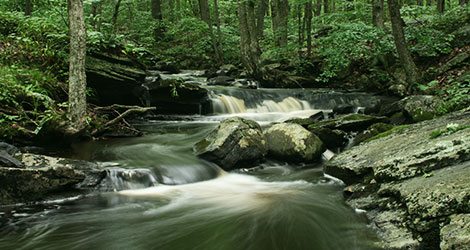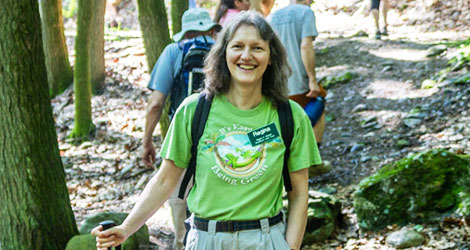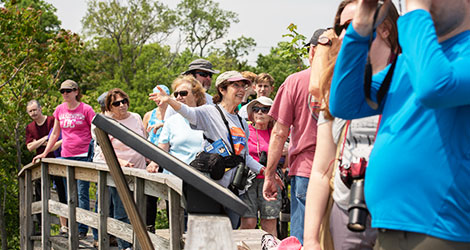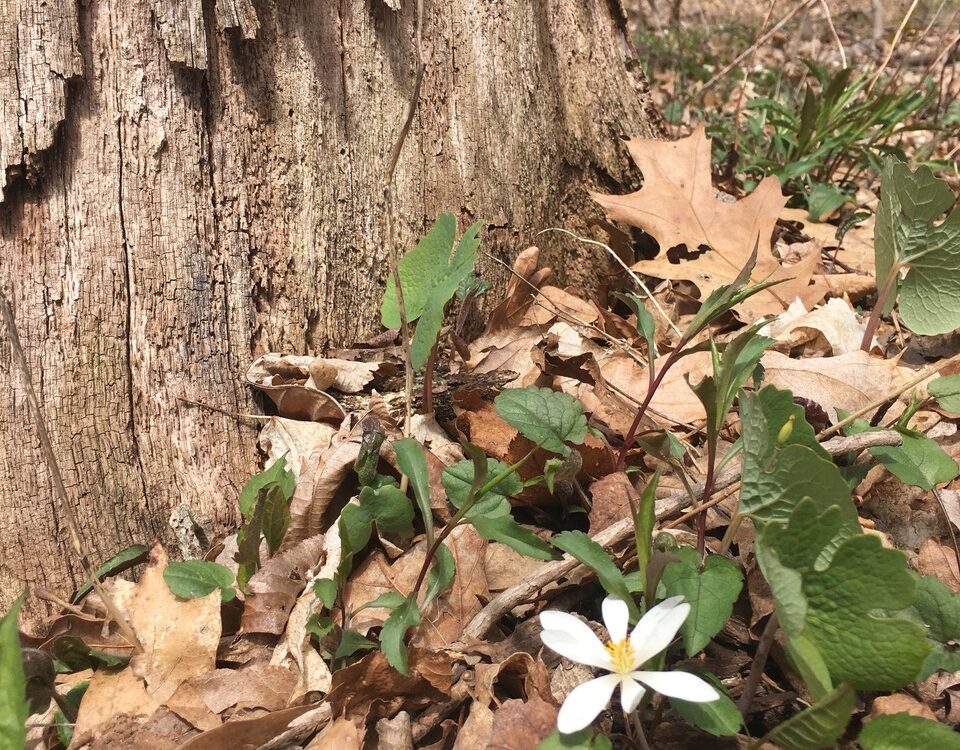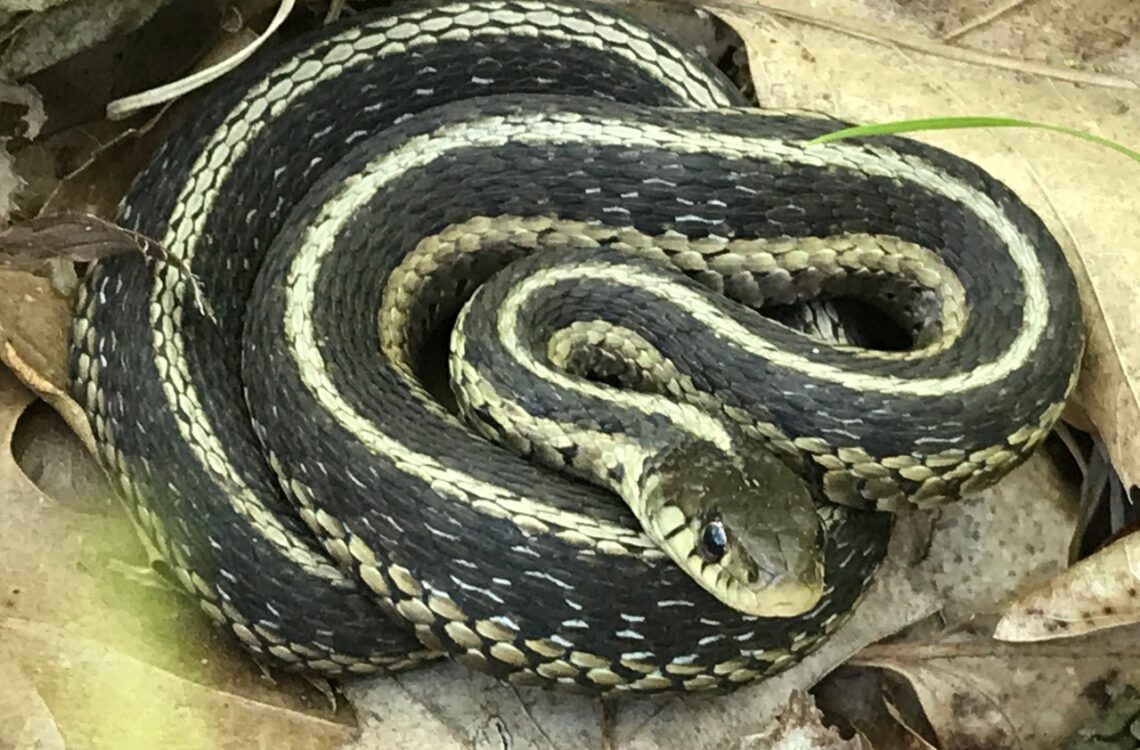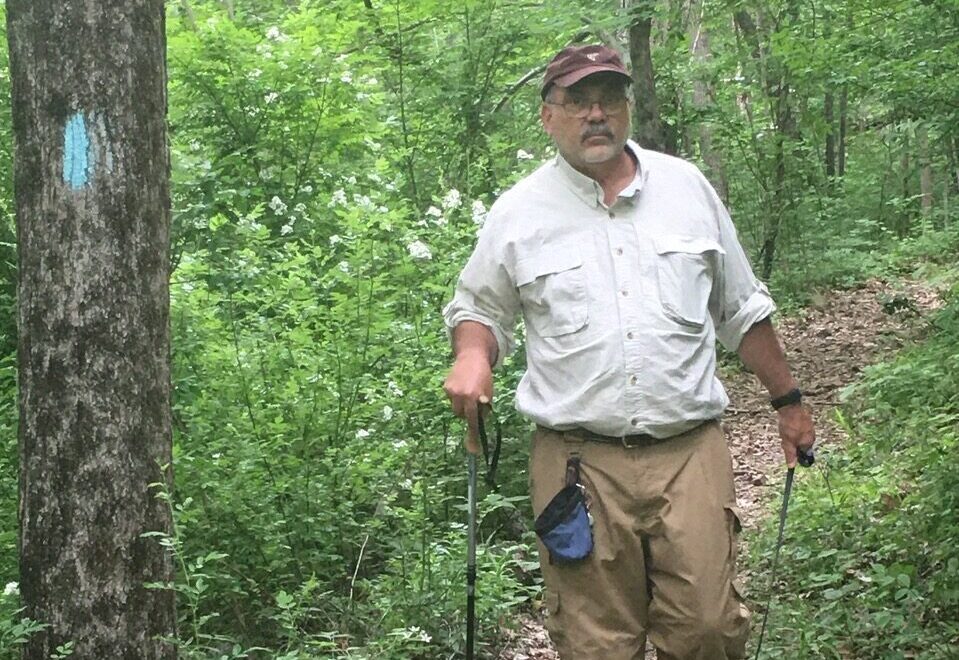
Meet Your Trail Host Hero
Interview with John Forline, Mattabesett Trail Landowner
The Mattabesett Trail is one of the oldest Blue-Blazed Trails. It provides fantastic hiking along its 65 miles, with rocky ledges and outcrops, steep cliffs with expansive vistas, and hardwood forests. In the spring, its abundance of mountain laurel perk up the forest with bountiful blooms. While this trail links protected areas like Cockoponsett State Forest, Millers Pond State Park, and numerous land trust preserves, many sections are hosted on privately-owned lands. John Forline, pictured above, owns property hosting a section of the trail in Durham. Here’s the story of his land and perspective of being a trail landowner. Thanks for being a trail host hero, John!
What’s your background?
“I retired from teaching and coaching in 2018 after close to 40 years in the profession. I have always loved the outdoors, probably due in large part to having grown up on an adjacent property to the lands that the Blue Trail is set on. I am of the generation where you spent most of your time outdoors, not in the house. I have a master’s degree in environmental education and was active in the District 13 outdoor ed program while a teacher. I was involved in Trout Unlimited’s trout in the classroom program. They piloted the program at Middlefield Memorial School in my classroom where we had great success raising first brook, then brown trout for release in local waters.
Nature subjects have also figured prominently in my art career. I competed at the New England Wildlife Exposition while it was held in CT during the late 80’s and early 90’s winning many awards. My best being a Second Best in Show for birds, in the amateur class and later a Best in Show in the professional division for fish.”
Where is your family’s land located?
“Two sections of the Blue Trail have their trailheads located in the south end of Durham. One begins on Stagecoach Road and the other begins on Route 17. These parcels of land were once a part of a large family farm, owned by my grandfather and grandmother, John and Maggie Forline.”
How long have you lived in the area?
“I am fortunate to have grown up on and now reside in an adjacent property that was once a part of the old farm land. The piece on RTE17 that I co-own with an aunt and a cousin is 58 acres of ridgeline with wetlands at its base. An old woods road winds its way up the ridge. This road was used to access wood for fuel and the milling lumber for building on the farm. This became the Blue Trail at some point in the past. The trailhead for this piece has been relocated a number of times over the years. One section was moved due to trail degradation from ATV use and others because of their proximity to houses. ATV use has diminished but still is a problem at times.”
What do you know about the history of your family’s land?
“I recently spent a great deal of time researching old land records at the townhall. I was searching to find the land purchases that made up the farm property. The earliest date of purchase was in 1917. I was able to account for 324 acres on the cards. On one of the documents the purchase was not listed in acres but described by its boundaries and referred to as a large parcel of southwest Durham. This is the general area of the trailheads. Another interesting document was a chattel mortgage. This lists all the farm assets which include farm machinery and equipment along with livestock. There were 61 head of cattle and two large plow horses on the farm at one time. The horses names were listed as Jerry and Dan. The old homestead with its barns, silos, ice house, sawmill, orchard, pastures, hayfields and cropland have long since been divided, developed and sold off. Many of the old structures are gone now. The farm land was purchased in 1917 and added to throughout the ’20’s according to family lore and was active in its entirety for a number of decades but slowly diminished in size as the property began to be broken up”
Have you noticed changes in the landscape over time?
“The character of the woods has changed a number of times over the years. The woods were once dominated by large hemlock trees, most of which have succumbed to woolly adelgids, although there seem to be a younger generation trying to get a new start. Ash trees plagued by the emerald ash borer have also been killed off. Beach trees seem to be the latest tree under assault. This has opened up the forest to allow light for more wildflowers to sprout. The dead trees have provided great homes for a number of birds and squirrels. Like the trees, the wildlife has its own cycles. Deer have always had a large presence. Coyotes and turkeys which I never saw as a kid are now commonplace. We have even sighted a fisher on the trail. A bobcat comes down off the trail and appears on the neighbor’s doorbell camera from time to time. Winter walks after a fresh snowfall are a great way to see what animals are making use of the trail. The number of different tracks along the same path can be surprising. I will often set up my trail cam to see what is active at night. Raccoons seem to be enamored with the camera, coming up to and directly looking into it. Deer, foxes, possums and the like do not notice and go about their way undisturbed.”
Sections of many of our most popular trails travel through privately owned land. What should hikers and other trail users be aware of when they use a trail that may cross private property? What advice do you have for them?
“The old adage of leave it better than you found it is something I try to adhere to. When I go fishing I always bring a bag to pick up trash. Between bottles, cans, and fishing line it usually ends up as quite a haul. I find when hiking it is less of a problem. The trail has been pretty free of of litter despite increased use. That is a nice reflection on the type of people in the hiking community. Most people have good trail manners but sometimes a reminder is helpful, things like keeping dogs on leashes and not picking wildflowers. A number years ago a beautiful (and rare) patch of lady slippers disappeared shortly after blooming. They may have been dug up. I have the trail head on Rte 17 posted for no ATV use. CFPA gave me these a number of years ago and I have also posted them where ever I’ve found ATVs accessing the trail.”
What do you like about having the trail on your property?
“I like to take my dogs along the trail for walks. It is a great joy to be able to walk out the door of my house and be in the woods following a trail any time I choose regardless of weather or season. I hope that the people using the trail have the same appreciation for it as I do.
The trail leads up to a beautiful vista that overlooks Pistapaug pond. This view is best taken in during the fall, first for the leaf colors and then once they’ve dropped, for the view of the pond and adjoining farmland. There are a number of interesting areas along the trail. Vernal pools, intermittent brooks creating deep ravines and patches of wild flowers can be found along the way.”
What issues have you run into by having the trail on your property?
“I have had to address wood cutting, clearing of property, and dumping of fencing on the property.”
Protecting the Blue-Blazed Hiking Trails
You might assume our Blue-Blazed Hiking Trails are fully protected by being on conserved lands. The truth is our trails have crossed a mosaic of public and private lands since the establishment of the first Blue-Blazed Hiking Trail in 1929. Some of our most popular trails, such as the Quinnipiac Trail, New England National Scenic Trail, and the Nipmuck Trail, have numerous and often lengthy sections on unprotected private lands. The landowners that own such lands graciously permit public access through their property, always free of charge and often without any recognition or even awareness by those that use the trails.
The private landowners that host our trails are as important for the long-term sustainability of our trails as ever. Without them allowing passage, the Blue-Blazed Trails would simply not exist as they do in their current form. Unfortunately, poor trail user etiquette, such as leaving behind trash, etc., jeopardizes public access to the trails we all love and puts an undue burden on those who own the land. So to shed a little light on the heroes that allow the trails on their land, we’re publishing a series of interviews with Blue-Blazed Hiking Trail landowners from across the state.

